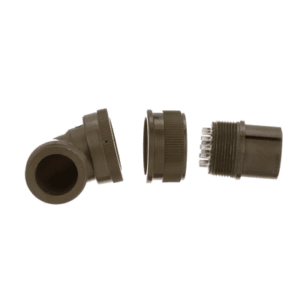Putting the right spin on products is helping to convert more online buyers at industrial electronics distributor Allied Electronics & Automation, says Stacey Ostermann, director of digital product content.
For Allied’s ecommerce site, providing detailed, useful displays of electronics products deployed in factory automation systems and other industrial uses is crucial to its ability to engage Allied’s customers with their highly technical needs, she adds.

Stacey Ostermann, director of digital product content, Allied Electronics & Automation
“This isn’t like shopping for a dress on Amazon, when a customer can ask ‘Do I really want it?’” Ostermann says. “Customers who search on our site know what they want, and really need to meet their exact product specifications.”
That’s why Allied Electronics & Automation has consistently upgraded its ecommerce site, AlliedElec.com, since launching it in 1998. “We’re adding tons of content to our site, including expert advice articles,” she says. “We want to help customers solve problems—not just give them products, but show them how to fix problems.” Allied, the Americas business unit of United Kingdom-based multibillion-dollar electronics distributor Electrocomponents plc, sells throughout the United States, Canada and Mexico and is starting to sell into Chile.
Going beyond the paper catalog
Until it changed its marketing and sales strategy in recent years, Allied relied mostly on its paper catalog and its network of 42 physical branches to reach and serve customers. But, responding to its customers’ increased interest in ecommerce, it discontinued the catalog in 2015. “So that makes our ecommerce site now that much more important,” Ostermann says.
Site search and page-loading speed are constant improvements, but ones that are considered table stakes among most if not all online sellers, Ostermann says.
To go beyond such site basics, Allied has also developed online features that help customers quickly sort through product options to compile products with the right mix of specifications. A product page for direct-current power supply equipment, for example, lets a buyer sort products by such criteria as output power, voltage, electric current and manufacturer.
Spinning 360 degrees

An electronic converter that buyers on AlliedElec.com can spin 360 degrees, zoom to enlarge, and “explode” into these three components to view details.
To make Allied stand out further online, the company deployed in August 2018 a 360-degree-spin imaging technology system that produces in Allied’s own studio 3D images of products; online viewers can spin the images around and zoom in to view fine details. For Allied’s customers, who often need to see such details before buying, “it can feel like they’re holding that product in their hands,” Ostermann says.
That level of online product displays is helping to differentiate Allied from its competitors, she adds. “Everyone out there is trying to provide faster site search, rank higher in Google results, and they also have product images,” Ostermann says. “But we were the first in our industry among our direct competitors to have 360-spin.”
“This is another step in our journey to create the best online experience for our customers,” says Dan Stewart, Allied’s vice president of ecommerce and marketing. “We know that images are particularly important to the experience our customers have online.
Higher conversion rates
The payoff has already arrived in higher conversion rates for products that Allied now features online in 3D images with 360-degree spin and zoom features, compared with products not featured with the new imaging technology system, Ostermann says, declining to provide specific rate increases. “We are seeing an increase in conversion that is very encouraging,” she says.
In addition, the imaging system, from imaging technology provider Snap36 LLC, is also helping Allied’s sales agents explain product details to customers. “They say it’s helping them sell,” she says.
So far, AlliedElec.com is featuring more than 20,000 of its some 3.5 million SKUs through the 3D-spin-zoom system. It eventually may display as many as two-thirds of its products—mostly those with multiple parts and interiors that warrant the 3D spin treatment, Ostermann says.
Allied’s ability to produce a large volume of product images in-house complements its move away from a paper catalog and toward a stronger focus on ecommerce, she adds. With paper catalogs and brochures, Allied could rely on its suppliers to provide the relatively smaller number of images it ran in print compared to what it now posts to its website.
“In the world of catalogs and brochures, if we had a circuit breaker in 20 variations, we might only show one image,” she says. “Now, in the digital world, we need to have an image of every variation. We have to make sure that what customers pull out of a delivery box matches what they ordered.”
Allied got off to a quick start with the product-imaging process when a Snap36 demonstration team showed up with four of their imaging machines and produced several thousand images. Allied then decided to purchase two imaging machines—consisting of a table that holds and revolves products while photographed by a digital camera—and hired a staff of four people to operate the equipment and manage the image files.
72 images per product
Ostermann declines to comment on the cost of the Snap36 technology, but notes that it enables Allied to take high-end 3D-spin images of a product in less than 10 minutes. The Snap36 equipment can accommodate products up to 90 pounds and four feet in length. As the equipment turns a product 360 degrees, it takes three sets of 24 images, from the bottom, middle and top, producing 72 images overall of each product. The result lets online customers use their computer mouse to spin the final product image 360-degrees and zoom into fine details.
Allied also uses the imaging system to show how multiple parts of a product fit together and detach in “exploded” images.
With its new equipment and staff, Allied currently has the capacity to produce about 1,000 3D-spin images per month, Ostermann says. Over the long term, Allied will apply the Snap36 treatment to the SKUs that most warrant the 3D-spin treatment.
That will help customers to more quickly consider products before placing an order, Ostermann says. “3D-spin digital images are way faster to view details than static product images with descriptions,” she says. “And customers don’t have to read through a 700-word description.”
Katy De Leon, vice president of marketing for Snap36, says her company provides photographic technology and services through three types of offerings:
It will sell photography equipment starting at under $10,000 that clients operate in their own facility; it also provides training, software, services and support.
It will shoot products at its own Chicago studio starting at $50 and up depending on the volume and complexity of the project.
And it offers a managed service, through which it will use its own equipment at a client’s warehouse to photograph thousands of products, often starting at $35 per product.
Sign up for a complimentary subscription to B2BecNews, published 4x/week, covering technology and business trends in the growing B2B ecommerce industry. B2BecNews is published by Vertical Web Media LLC, which also publishes DigitalCommerce360.com, Internet Retailer and Internet Health Management. Contact B2BecNews editor Paul Demery at [email protected] and follow him on Twitter @pdemery.
Follow us on LinkedIn and be the first to know when new B2BecNews content is published.
Favorite